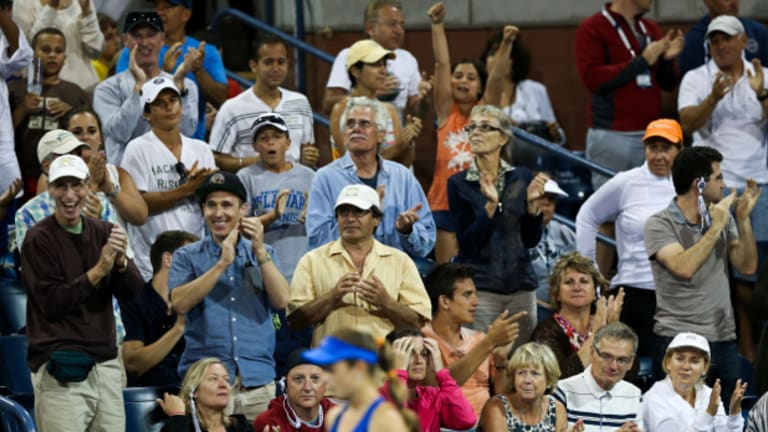NEW YORK—“CiCi Bellis is the night session,” tweeted one American tennis pro on Thursday evening. As unlikely as that sounded, it was true: Even as Andy Murray, the 2012 U.S. Open champion, was playing his subtle tricks inside Arthur Ashe Stadium, most fans were running—yes, running—in the other direction, toward far Court 17, to see a 15-year-old girl play a second-round match.
The scene inside 17 was a heady mix of anticipation, hope, patriotism, alcohol, the Hamptons, and, in the end, an irrational sense of disappointment that the magic show was over so soon. It was exactly the same frothy brew that had been whipped up one year earlier on the same court when another American girl, 17-year-old Victoria Duval, played her second-round match after upsetting Sam Stosur. Looking back a little further, we can see it was also reminiscent of the explosive anticipation surrounding early-round matches played by 17-year-old Melanie Oudin in 2009, and 18-year-old Ryan Harrison in 2010. There are probably a couple of others in recent years that I’m forgetting.
As with those matches, Bellis' was, more than anything else, a lot of fun. We were treated to the first of what U.S. fans hope will be many looks at an exciting, raw talent; Bellis, for someone who likely tips the scales in the double digits, puts a loose-wristed wallop on the ball. And we had a chance to see a rare site in professional sports: Someone learning what the big time is like, and embracing it, before our eyes.
Bellis walked to the back of the court to pick up her own towel, forgetting that she could tell a ball person to go get it for her. She strode enthusiastically from one point right into the next, in about eight seconds flat, before being gently told by the chair umpire, “We’re going to slow it down now, CiCi.” When the crowd began chanting “Let’s go, CiCi!” she laughed so hard her body started to bounce up and down. And when she missed a backhand long in the second game, she yelled, “Jee-zus!” as if she’d never missed a backhand before.
Afterward, Bellis said that her three days of fame were “mind-blowing.” Now that’s she out of the tournament, the talk will shift to whether she's the “real thing” or not. One of the hosts of the popular ESPN sports-talk show Pardon the Interruption was of the opinion that Bellis’ first-round win wouldn’t mean much if she didn’t back it up the way Chris Evert did when she reached the semis of the Open at age 16 in 1971. Those are unrealistic expectations, of course, but the general concern is valid.
